From the lecture given by Mr. Lucas Viar Basterra at theThe event was held in the auditorium of the Archbishop's Palace of Alcalá de Henares, for the Diocesan School of Liturgy promoted by the Delegation of the Diocese of Alcalá de Henares.n de Liturgia, in collaboration with theThe Diocesan Institute of Theology "Theology in the Diocese".Santo Tomás de Villanueva".
Light is a necessary condition to perceive the elements in space but not enough to achieve expressiveness. The expressiveness of the spaces is achieved with the contrast and the play of light and shadow that light allows..
LIGHT IN SACRED SPACE
After the Edict of Milan (313) and with the cessation of persecutions, Christians came out of the catacombs and began to build churches in the public space. To this end the basilica was chosen as a model, a type of large and luminous building, very different from the pagan temple, which was characterized by being an enclosed and dark space. The basilicas had large windows that kept the interior illuminated, but let in the cold. To close them, materials were sought that allowed the passage of light: selenite and alabaster, translucent plasters that filtered the light and gave texture to the space.
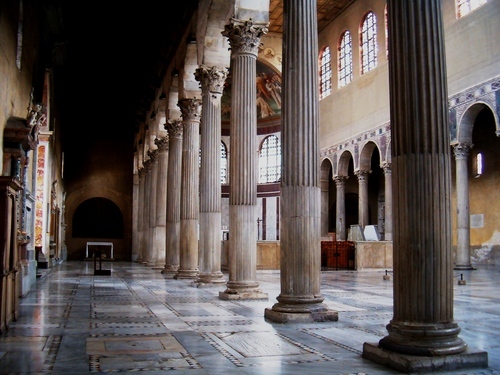
Basilica of Santa Sabina (Rome)
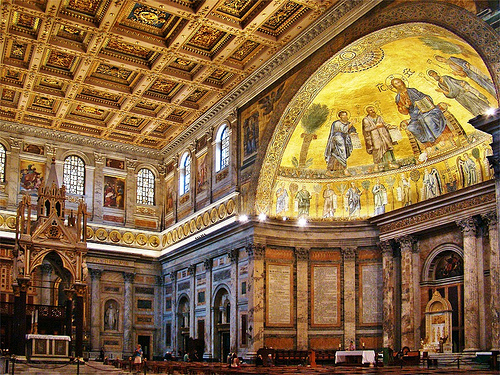
Basilica of St. Paul Outside the Walls (Rome)
CENTURIES VI - XII
Later on, glass began to be worked, which, fused with different metallic oxides, adorned the interior space with colored light.
It seems that already in the sixth century this material was worked in small pieces, which were assembled with lead rods, but the fragility of the material and changes in fashion have meant that only a few examples from the twelfth century have survived to the present day, although a very advanced degree of sophistication had already been observed before that time.
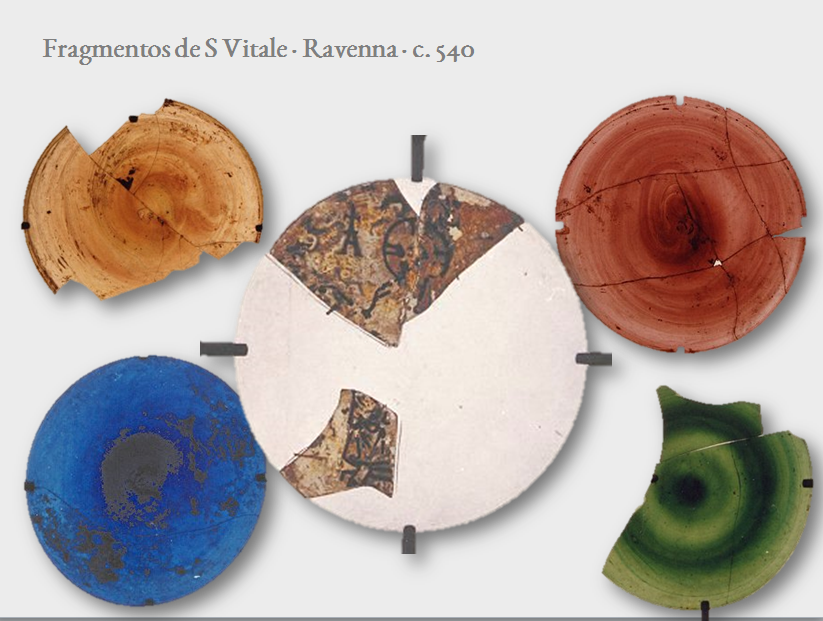
Fragments of San Vitale, Ravenna (S.VI)
Glass artists saw their imagination limited by a color palette limited to a few shades, the need to use grisaille and small size of the pieces, obstacles that were disappearing with the technological development of glass production.
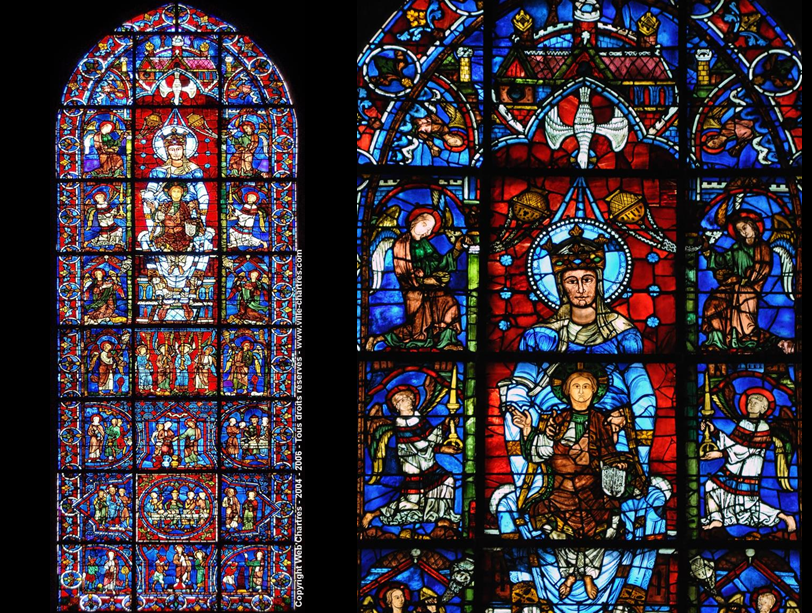
Augsburg Cathedral - c. 1120
XIII - XV CENTURIES . THE FULL GOTHIC
During the Gothic period of the fourteenth and fifteenth centuries was when the technique was most developed, giving rise to huge stained glass windows depicting scenes of the Church Triumphant. Technological advances made it possible to greatly increase the range of colors, the shades of tones and the size of the pieces. The iconographic program was also increased and enriched: from representations of the saints and relevant scenes of the scriptures to representations of great symbolic complexity are preserved. In no case was it a "simple" explanation because the scenes of the Old and New Testament were intertwined with beasts and mythological, symbolic and mystical elements.
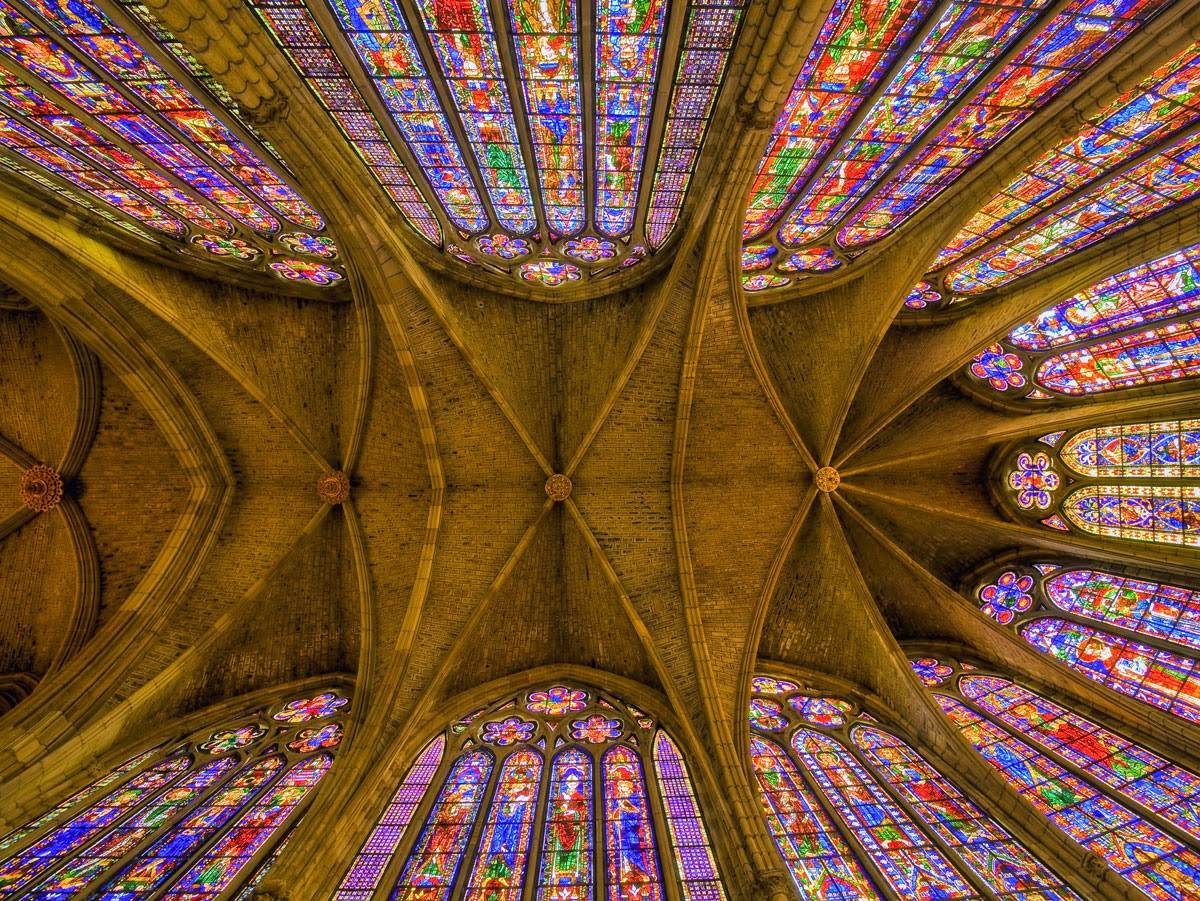
Cathedral of León, (XIII Century)
DECADENCE
Although during the Renaissance multiple stained glass workshops continued to operate, the production of these declined sharply. The heyday ceased with the beginning of a new pictorial genre: oil painting. This new technique allowed the superimposition of colors with transparency, unlike traditional tempera painting. This, and the realism that oil painting allowed, led to the search for more clarity in the interior of churches in order to better contemplate the works they housed.
The Protestant Reformation and the Counter-Reformation of the church also affected the conception of iconographic programs and the aesthetic language of the churches.
THE BAROQUE
During the Baroque period, the expressive language of art underwent a radical change, moving from hieratic models to dramatic expressionism. In this new context, light radically changes its use and appears for the first time as a definition of volume and space in order to give expressiveness to the scenes. Chiaroscuro began to be used as a supporting element and light began to be used as another scenographic element.
The ingenuity of the architects of this period is sharpened; and they begin to use light in a new way. In this work by Bernini, we see how indirect zenithal light passing through a hidden window is used, giving the work greater expressiveness and offering a new perception of volume.
![Light at the service of the Liturgy II: Light in liturgy and art. 6 10[1].jpg](https://granda.com/wp-content/uploads/2021/09/101.jpg)
Extasis of St. Teresa, Bernini (XVII century)
THE USE OF LIGHT IN CONTEMPORARY ART
This has been the path that light has had as an artistic element, let's see how light is used today and how it is perceived in contemporary art.
According to Michael Patrick, light today tends to be handled in two ways. Thus, he defines as "mystical light" the light that has a supporting function, that enhances contrast but always at the service of the purposes of the space it illuminates, and as "mythical light" the light used as an abstratcto, as an end in itself. This second type of light generates anarchic spaces, without hierarchy, which only admit one element: ethereal light. In this way, spaces are created where light is the protagonist but other elements that transmit the truths of faith, such as an altarpiece or a crucifix, lose their aesthetic raison d'être.
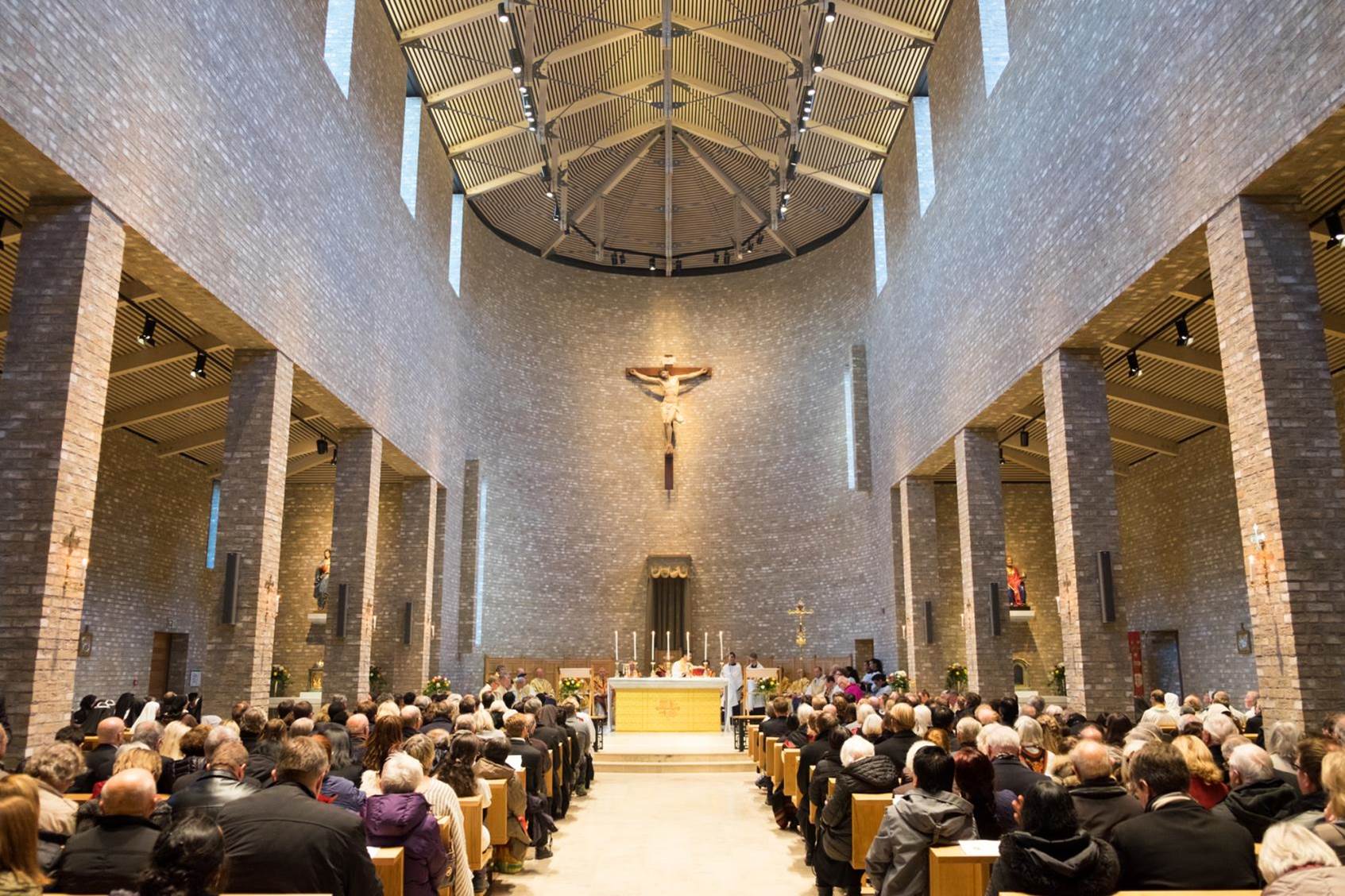
Trondheim Cathedral, Norway.

Cistercian monastery by architect John Pauson.
Related content here
